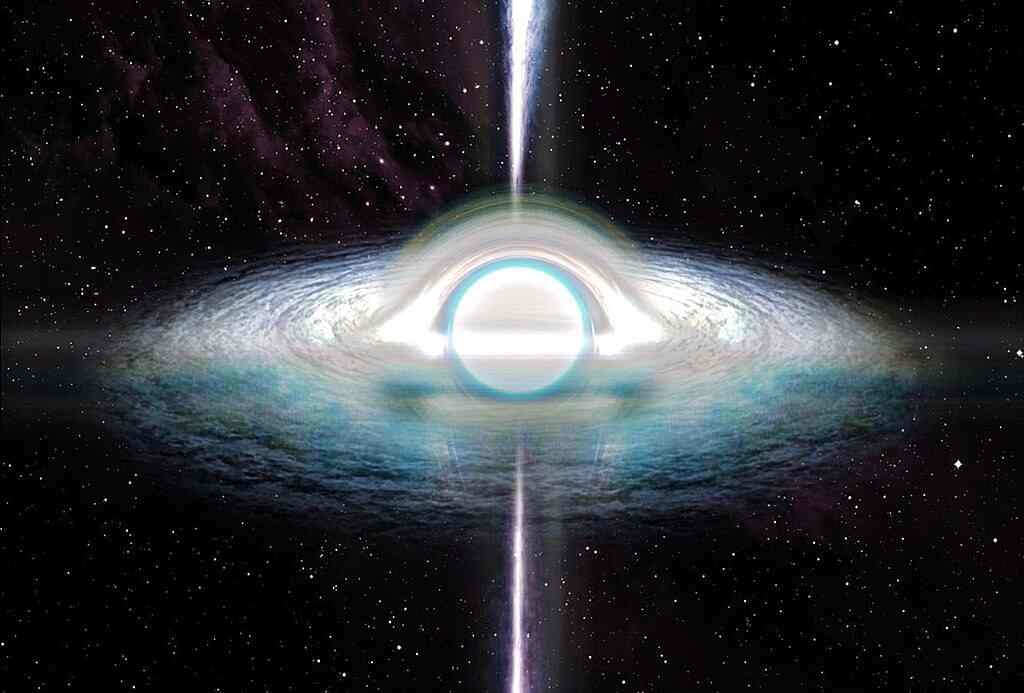White Hole: Puzzling Cosmic Phenomena Explained
White hole, the enigmatic counterparts of black holes, have intrigued scientists and stargazers for decades. In this article, we will delve into the fascinating world of white holes, exploring their theoretical existence, characteristics, and their place in the cosmic narrative.
What is a White Hole?
A white hole is a theoretical cosmic object that, unlike a black hole, doesn’t suck in everything around it. Instead, it is imagined to expel matter, light, and even time itself. While black holes are known for their powerful gravitational pull, white holes are speculated to push everything away.
The origine of white holes
The origin of white holes is a concept in theoretical physics. Unlike black holes, which are well-studied and observed in the universe, white holes are more of a theoretical idea.
In theory, a white hole is like the reverse of a black hole. While a black hole pulls everything in with its strong gravity, a white hole would push everything away. It’s like a one-way street for matter and energy.
However, it’s important to note that no direct evidence or observations of white holes have been made in space. They exist primarily as a concept in mathematical equations and theoretical discussions among physicists. So, their origin as a real cosmic phenomenon is still purely hypothetical.
Theoretical Existence:
In astrophysics, a white hole is a hypothetical region of space into which matter or energy cannot enter. A white hole is therefore the opposite of a black hole, from which neither matter nor energy can escape.
White holes are largely theoretical and have not been observed directly. They are a natural consequence of the equations of general relativity, Albert Einstein’s theory that describes the force of gravity. However, no definitive evidence of their existence has been found in the observable universe.

A diagram of the structure of maximally extended spacetime of a black hole. The horizontal direction is space and the vertical direction is time. TimothyRias, CC BY-SA 3.0, via Wikimedia Commons
The Opposite of a Black Hole: If you imagine a black hole as a cosmic vacuum cleaner, constantly pulling everything in, a white hole is like a celestial leaf blower, energetically expelling matter and radiation. While black holes are shrouded in darkness, white holes would be exceptionally bright due to the continuous outpouring of energy.
Time and White Holes:
One of the most intriguing aspects of white holes is their potential relationship with time. Some theories suggest that time might behave differently near a white hole, creating a sort of “time warp.” This concept is still purely theoretical and is a subject of ongoing scientific exploration.
When it comes to white holes, there’s a really fascinating idea involving time. Imagine if near a white hole, time didn’t tick away in the usual way. Instead, it might act in a really different manner, almost like a “time warp.”
Now, keep in mind, this is a theory, which means it’s a thought that scientists are still figuring out. Nobody has actually seen this happen near a white hole. It’s like a big puzzle scientists are trying to solve. They’re using math and imagination to understand if time near a white hole might act strangely.
So, while it’s a super interesting idea, we’re still in the phase of exploring and imagining how time might work near a white hole. It’s like a really exciting science fiction story, but scientists are working hard to figure out if it could be a real thing!
Examples in Popular Culture:
White holes have captured the imagination of science fiction writers and filmmakers. In the iconic sci-fi series “Star Trek,” white holes are featured in various episodes, often as gateways to different parts of the universe. In Arthur C. Clarke’s novel “The City and the Stars,” a white hole serves as a crucial plot element.
Big Bang which describes how the Universe was “born” | This Is How It Begins!
The Quest for Observational Evidence: Scientists are actively searching for any signs of white holes in the universe. They analyze data from space telescopes, study cosmic phenomena, and explore anomalies in the fabric of spacetime. While no direct evidence has been found yet, the quest for understanding the true nature of white holes continues.
Conclusion: White holes remain one of the most captivating and mysterious concepts in astrophysics. While they are still firmly in the realm of theory, their potential implications for our understanding of the cosmos are profound. As technology advances and our exploration of the universe continues, who knows what discoveries may lie ahead in the enigmatic realm of white holes.
Sources: PinterPandai, Wikipedia, Universe Today
Photo credit: Baperookamo, CC BY-SA 4.0, via Wikimedia Commons



